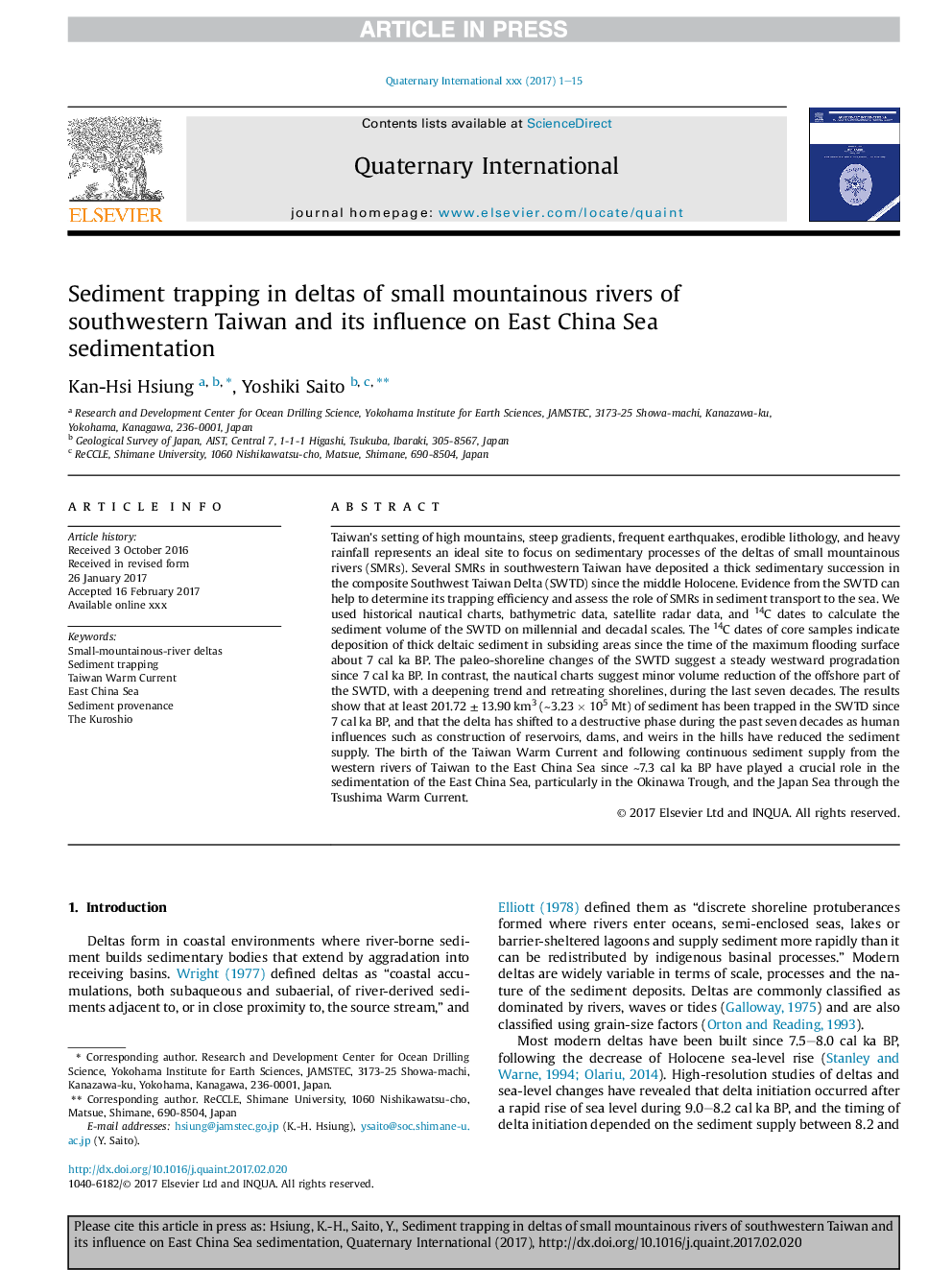| Article ID | Journal | Published Year | Pages | File Type |
|---|---|---|---|---|
| 5112964 | Quaternary International | 2017 | 15 Pages |
Abstract
Taiwan's setting of high mountains, steep gradients, frequent earthquakes, erodible lithology, and heavy rainfall represents an ideal site to focus on sedimentary processes of the deltas of small mountainous rivers (SMRs). Several SMRs in southwestern Taiwan have deposited a thick sedimentary succession in the composite Southwest Taiwan Delta (SWTD) since the middle Holocene. Evidence from the SWTD can help to determine its trapping efficiency and assess the role of SMRs in sediment transport to the sea. We used historical nautical charts, bathymetric data, satellite radar data, and 14C dates to calculate the sediment volume of the SWTD on millennial and decadal scales. The 14C dates of core samples indicate deposition of thick deltaic sediment in subsiding areas since the time of the maximum flooding surface about 7 cal ka BP. The paleo-shoreline changes of the SWTD suggest a steady westward progradation since 7 cal ka BP. In contrast, the nautical charts suggest minor volume reduction of the offshore part of the SWTD, with a deepening trend and retreating shorelines, during the last seven decades. The results show that at least 201.72 ± 13.90 km3 (â¼3.23 Ã 105 Mt) of sediment has been trapped in the SWTD since 7 cal ka BP, and that the delta has shifted to a destructive phase during the past seven decades as human influences such as construction of reservoirs, dams, and weirs in the hills have reduced the sediment supply. The birth of the Taiwan Warm Current and following continuous sediment supply from the western rivers of Taiwan to the East China Sea since â¼7.3 cal ka BP have played a crucial role in the sedimentation of the East China Sea, particularly in the Okinawa Trough, and the Japan Sea through the Tsushima Warm Current.
Related Topics
Physical Sciences and Engineering
Earth and Planetary Sciences
Geology
Authors
Kan-Hsi Hsiung, Yoshiki Saito,
